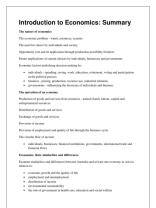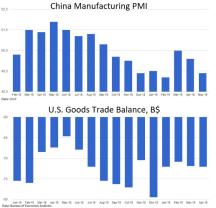How do you calculate a tariff?
Calculating tariffs involves determining the amount of tax imposed on imported or exported goods. The method of calculation can vary depending on the country, the type of goods, and the specific tariff system in place. Here are the general steps for calculating a tariff:
Determine the Tariff Rate:
- The tariff rate is the percentage or fixed amount imposed on the value of the imported or exported goods. It is specified by the government and can vary based on the type of goods and the trading partners involved.
Know the Customs Value:
- The customs value is the basis for calculating the tariff. It includes the cost of the goods, shipping, and insurance. Sometimes other charges are also included. The customs value is determined in accordance with international customs valuation rules, such as the World Trade Organization's (WTO) Agreement on Customs Valuation.
Calculate the Ad Valorem Tariff:
- For ad valorem tariffs (tariffs based on a percentage of the customs value), the calculation is straightforward:
- Ad Valorem Tariff = Tariff Rate (%) × Customs Value
- For ad valorem tariffs (tariffs based on a percentage of the customs value), the calculation is straightforward:
Calculate Specific Tariffs:
- For specific tariffs (tariffs based on a fixed amount per unit of the goods), the calculation is:
- Specific Tariff = Tariff Rate (per unit) × Quantity of Goods
- For specific tariffs (tariffs based on a fixed amount per unit of the goods), the calculation is:
Determine the Total Tariff Amount:
- If there are both ad valorem and specific components, you may need to calculate both and sum them to get the total tariff amount:
- Total Tariff = Ad Valorem Tariff + Specific Tariff
- If there are both ad valorem and specific components, you may need to calculate both and sum them to get the total tariff amount:
Consider Other Factors:
- Some countries may have additional charges or exemptions based on factors such as the country of origin, the type of goods, or trade agreements in place. It's important to be aware of any such factors that may affect the final tariff calculation.
Use Harmonized System (HS) Codes:
- Goods are classified using an international coding system called the Harmonized System (HS). This system assigns a unique code to each product, helping standardize tariff calculations globally. Ensure that you correctly identify and use the appropriate HS code for the goods in question.
Check for Preferential Tariff Treatment:
- In some cases, goods may be eligible for preferential tariff treatment under trade agreements or preferences granted to certain countries. This can result in reduced or zero tariffs for eligible goods.
It's crucial to consult the specific tariff schedules and regulations of the importing or exporting country to ensure accurate calculations. Customs authorities, government trade agencies, or official trade documentation provide detailed information on applicable tariff rates and procedures. Keep in mind that tariff structures and rates can change, so it's essential to use the most recent and relevant information available.
Crunching the numbers: How do you calculate a tariff?
To calculate a tariff, you will need to know the following information:
- The value of the imported goods
- The tariff rate
The tariff rate is expressed as a percentage of the value of the imported goods. For example, a tariff rate of 10% means that you will pay a tariff of $10 for every $100 worth of imported goods.
To calculate the tariff, simply multiply the value of the imported goods by the tariff rate.
Example:
The value of the imported goods is $1,000. The tariff rate is 10%.
The tariff is calculated as follows:
Tariff = Value of imported goods * Tariff rate
Tariff = $1,000 * 10%
Tariff = $100
Therefore, the tariff on the imported goods is $100.
Understanding the formulas and methods for calculating tariffs on imported goods
There are two main methods for calculating tariffs on imported goods:
- Ad valorem: Ad valorem tariffs are calculated as a percentage of the value of the imported goods.
- Specific: Specific tariffs are calculated as a fixed amount per unit of imported goods.
In most cases, tariffs are calculated using the ad valorem method. However, specific tariffs are sometimes used on certain goods, such as agricultural products and textiles.
Tips for businesses and importers on accurate tariff calculation for cost assessment
Here are some tips for businesses and importers on accurate tariff calculation for cost assessment:
- Identify the correct tariff classification: The first step in calculating a tariff is to identify the correct tariff classification for the imported goods. The tariff classification is a unique code that is assigned to each type of imported goods. The Harmonized System (HS) code is the most common tariff classification system used by countries around the world.
- Determine the applicable tariff rate: Once you have identified the correct tariff classification for the imported goods, you can determine the applicable tariff rate. You can find tariff rates on the websites of government agencies such as the United States Trade Representative (USTR).
- Use a tariff calculator: There are a number of tariff calculators available online that can help you to calculate the tariff on your imported goods.
- Consult a trade professional: If you have any questions about tariff calculation, you should consult a trade professional. A trade professional can help you to ensure that you are calculating your tariffs accurately.
Accurate tariff calculation is important for businesses and importers because it allows them to assess the cost of their imported goods and to set prices accordingly. It is also important for businesses to comply with all applicable tariff laws and regulations.











